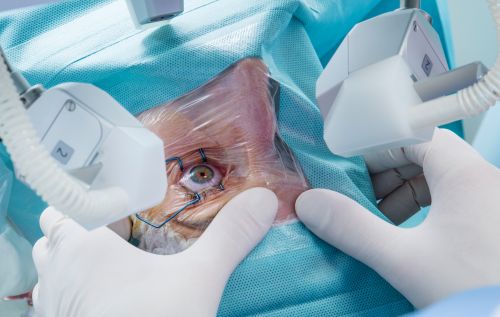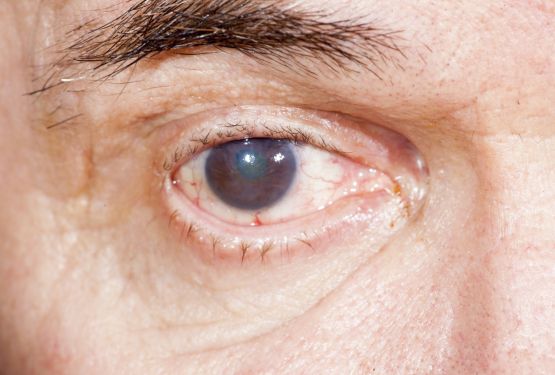Let’s start with the understanding of the cataract, its symptoms and diagnoses and only then will we move on to the treatment of this disease. The cataract is a quite widespread pathology of the eyes, which is caused not only by lenticular opacity but also by the loss of its elasticity. This process often leads to various visual impairments.
Nowadays, the cataract is one of the most widespread diseases of the eyes. Older persons are the ones most exposed to getting this disease. However, cataract infection cases are increasingly found among younger people. This is the reason why the request for “cataract reasons symptoms treatment” is becoming increasingly popular among Internet users.
Types and degrees of the cataract
There are several classifications of this disease. One of them is based on how the person got the cataract: whether it was congenital or a lifetime. In most cases, the disease is contracted. Children are seldom born with a cataract diagnosis.
The disease itself is not the reason for medication, as the problem with the crystalline lens of an eye seldom harms the vision of the person. However, there are also exceptional cases when the specialist recognizes a complex form of the cataract, which can lead to total blindness – in that case, immediate treatment should be started.

The turbidity happening at the cataract can be located on the poles and nucleus of the lens. Sometimes there are cases of alternation of healthy tissues with the struck ones – in that case, there is an immoral or zonular cataract. Such a diagnosis as a capsular cataract says that only the forward capsule of an eye grows turbid.
There is also a membranous cataract, which is characterized by the formation of a turbid membrane at the adherence of two capsules of the crystalline lens: front and back. If the damage extends to all tissues of a crystalline lens, it is a total cataract.
The disease develops gradually. There are 4 stages of disease development differing with the degree of damage of the crystalline lens tissues, as well as the degree of influence on the person’s vision:
The first stage is called the initial. It differs by the transparency of the crystalline lens as the process of the damaging of its tissues has just begun, and the acuity of vision is retained;
The second stage is called an immature cataract, at which time the lenticular opacity begins and decreases the acuity of vision;
The third stage is called a mature cataract. At this stage of the progression of the disease, there much damage to the crystalline lens tissues occupying almost all its zone. The person with a mature cataract notes a considerable decrease in the acuity of their vision.
The fourth stage is an overripe cataract, at which the crystalline lens fibers completely fall apart and the capsule gets a folded form.

Why does cataract occur?
The main reason causing the emergence and development of the disease is the aging of the human body. The human crystalline lens is arranged in such a way that virtually all of us have a problem with its turbidity. The greatest percentage of people having cataract is found after the age of 65 years. However, the disease can develop also at an earlier age. The factors that can influence it includes:
- The existence of other diseases of the eyes;
- Genetic predisposition;
- Injuries of the eyes of various degrees of severity;
- Sun’s rays, ultra-violet and SHF radiation which are harmful to a human eye;
- The existence of addictions;
- Bad ecology.
A long treatment of certain medicines can also provide the beginning of a cataract as well. In addition, violations in the working of the endocrine system, among which you should note diabetes and other metabolic disorders, often have resulted in the disease.
All the things described above belong to the acquired cataract. It is still impossible to speak about the reasons for congenital cataracts, as they have not been studied yet. Among the most probable causes, when the child is born with a cataract, you should note the genetics and an infection postponed in the prenatal period.
How can the cataract be diagnosed?
Most often, the specialist finds the cataract when the patient complains of acuity of vision failure. However, there are cases when the disease does not affect the acuity of vision of the person as the damage captured another side of the crystalline lens. The first “red flag” for you is an emergence of “flies” before your eyes. This symptom is often connected with a tension of vision. Vision decrease leads to double vision and blurring of objects, people have difficulties during work with small items. It is becoming more difficult to read, watch TV and work their personal computer.

It is worth addressing the specialist when you note problems with perception of color or strengthening of the sensitivity of the eyes to light – these disturbing symptoms can lead to the development of a cataract. The cataract can be diagnosed also by a change of your pupil’s appearance: gradually with the development of the disease, it starts losing color and becomes completely white.
However, only a highly skilled ophthalmologist can diagnose the cataract. The doctor can suspect the progressive disease during an ordinary examination of the eye. However, it is worth conducting an eye biomicroscopy to make the correct diagnosis. This procedure is painless. The doctor investigates your eye, using a light slit lamp. The narrow light beam of the lamp helps him to know all about the state of your eyeball and all its tissues.
Treatment of the cataract
The cataract in the initial stages often only requires the use of special eye drops. Often ophthalmologists prescribe their patients Vicennium, Quinax, and other medicines. Eye drops help to slow down the progression of the disease. Patients then note the improvement of their eye’s condition. However, such medicines cannot cure this crystalline lens disease completely.
Today there is only one way of fully treating the cataract – it is an operation. At the same time, operations can be one in different ways, but they all pursue one aim – removing the crystalline lens of an eye affected by the disease and replacing it with an artificial one. Modern operations do not demand a lot of time or cause problems. At the same time, vision is restored in 100 percent of cases.
Complications after the cataract
The cataract is dangerous first of all because of possible complications, including secondary glaucoma. This complication is caused by the increase of pressure onto the crystalline lens, which happens to some patients with a cataract. The increased pressure on the crystalline lens leads to a delay and accumulation of liquid and, as a result – to increased pressure inside an eye.
Secondary glaucoma can lead to the person becoming totally blind. Unfortunately, even with today’s modern medical knowledge, no medicine is available that can cure blindness, which arises because of the development of secondary glaucoma.
There are seldom any complications after the operation, however, some of the possible complications include astigmatism, hemorrhage, and even retinal detachment. For this reason, it is important to be under medical supervision during the post-operational period.





